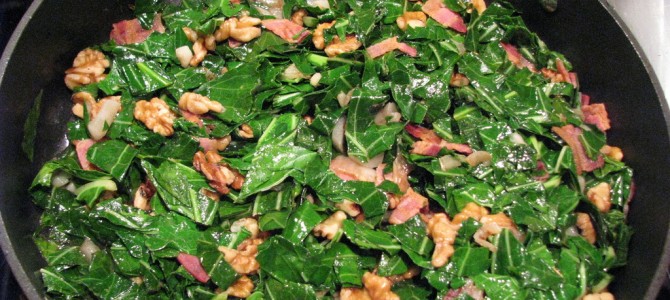
Econ 101 holds that as demand for something increases, so does the price. #Foodgentrification is a new hashtag for this old rule. The originator of the hashtag, Mikki Kendall, aptly described the trend as “the impact of a traditionally low income food becoming trendy.” It gets expensive. She worries about how she can afford to feed her children “soul food” — cheap and nutritionally dense African-inspired dishes developed by African-Americans in the South from slavery to the Civil Rights Era, when the cuisine got its name. She summarized her thoughts in an article on food insecurity at #breakingBLACK.
#Foodgentrification tweets expressed frustration with everything from Food Network chef’s telling soul food cooks they were “doing it wrong” to hipsters driving up the price of now-trendy kale to 11 bucks a pound. Throw on the added insults that poor minorities are often blamed for obesity problems because they eat cheaper processed food and that cheap collard greens are the new kale—“What are the poor supposed to eat?!” the participants wanted to know.
It is a good question, one that I expect we haven’t seen the last of, especially if anyone makes the connection to the underlying trend towards organics. It’s not just produce becoming trendy that drives up the price, but also that the wealthy demand organic produce which drives conventional and cheaper produce out of the market.
A few notable points about the discussion:
Soul Food Saves Money And Time
In many posts I found about soul food, from news to medical advice and from high profile women of color like Oprah and Michelle Obama, I did not see any discussion of affordability or of prep time. Not only is it supposed to be cheap, but also soul food has one-pot, slow cook, serve anytime convenience that the new recipes don’t replicate. I don’t have the time to make some of those alternative, healthy soul food dishes and I have a freelance job and a housekeeper. The single breadwinner mom with 2 jobs has no chance of living up to the new recipe standards even if she could afford the ingredients.
Pretension on a Plate*
Some forms of food gentrification seem to want to be trendy and exclusive at the same time. It doesn’t want everyone to want the food, just some people. From a post describing recent restaurant trends and asking if we are becoming a nation of snobs:
I remember once being proud of myself because I deduced that a menu item described along the lines of “hand raised organic sliver of Chilean veal gently immersed in thrice-baked authentic Catalonian mother-of-pearl-infused toast morsels,” was wiener schnitzel.
Consistent ability to translate such restaurant menus marks one as a member of the hip cognoscenti. It’s not about the food, but the fancy adjectives.
Flip sides of the same coin: Walmart and Whole Foods
Walmart, ever vilified, at least brings affordable goods to the poor. Whole Foods, often praised, generates unease among communities it targets for expansion. It brings $4 bucks-per-package spinach and signals creative class influx, which doesn’t form communities as expected.
The Puzzling Trends Against GMOs and for Organics
In the Twitter conversation, genetically modified crops (commonly referred to as GMOs) came in for criticism and organics for praise, odd given the complaints of expense and availability. I saw more than a few comments about foods without pesticides or engineering nonsensically costing more. But pesticides and splicing doesn’t drive price compared to yield and labor. Organic and heritage strain food require more land and more labor to produce, so farmers either produce less or pay for more labor, both of which result in a higher price.
Norman Borlaug won the Nobel Peace Prize and is remembered as the man who fed the world for his innovations that helped make the biggest achievement in human history possible. GMOs increase yield. They are to starvation as the printing press was to illiteracy.
Isolation of the New Domesticity
“Food is never just about food.” Food is communal.
I won’t drown readers in Mommy Wars posts, but the trendy advice tells us to do what’s best for our own family. No judgment. To each their own, be it knitting, personal farming, or cooking. This is the “new domesticity.” Women tout supporting each other in our individual choices as the panacea for all modern domestic troubles. This advice falls short in many ways, but perhaps its greatest weakness lies in everyone making rooms of their own. We might gain control of our immediate environment, but in our separate rooms we lose common experience. We lay weak foundations for community.
Regarding food, when one family is vegan, another locovores, and another avoiding whatever preservative or dye currently carries the blame for hyperactivity—these families don’t run into each other at the same grocery, don’t share recipes, and certainly don’t dine together.
Food doesn’t just fuel our bodies, it gives us a way to connect, or at least it once did.
This lack of connection features in all of the gentrification trends. Gentrification is a harbinger of a break in community, which makes all of life’s other burdens harder to bear.
*Hat Tip to @myopiabillison for the pretension phrase.









